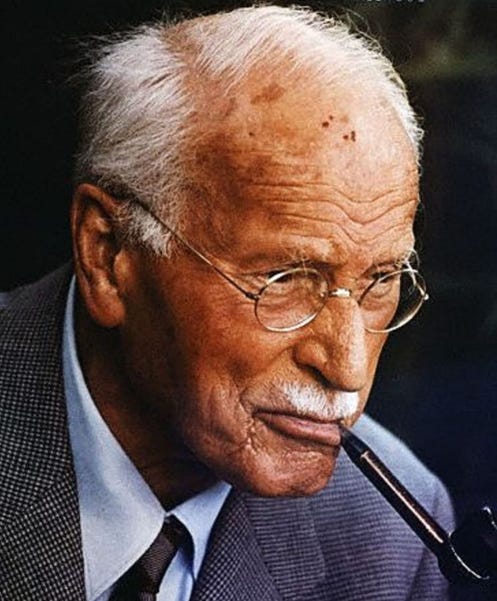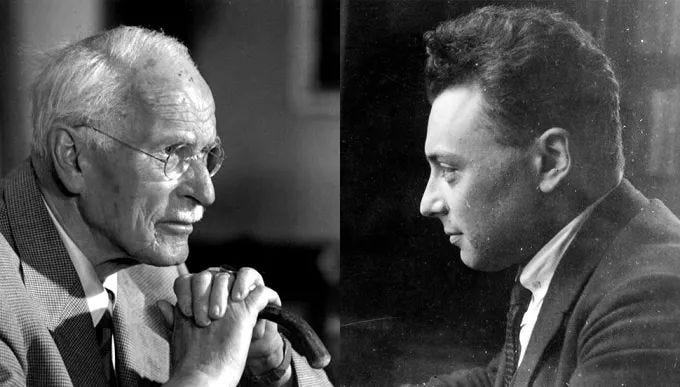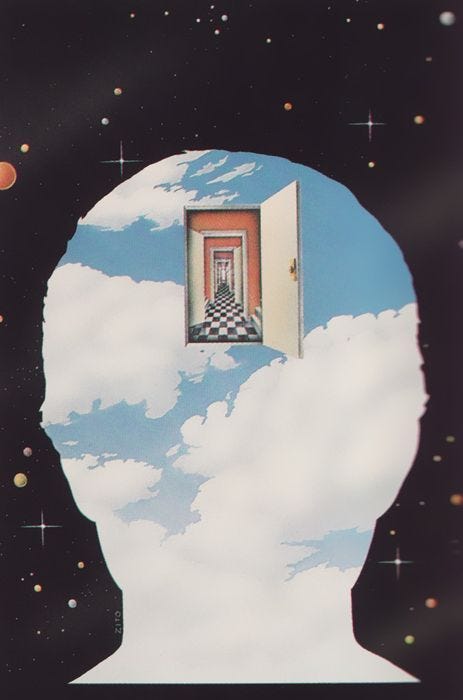Carl Jung & Synchronicity
You didn’t stumble upon this article by accident.
At least, not according to Carl Jung.
The 20th-century Swiss psychiatrist and founder of analytical psychology introduced the world to synchronicity - a concept that describes those eerie, seemingly impossible coincidences we’ve all experienced. You know the ones… The kind that stop you in your tracks and leave you wondering whether something deeper is at work beneath the surface of reality.
The word itself comes from the Greek syn- (together) and chronos (time). Synchronicity, in Jung’s words, refers to “a falling together in time.” Not just a coincidence, so to speak, but a sort of eclipse of our inner world and the events unfolding around us in the material world.
Synchronicities are those moments when a dream comes to life, a thought becomes a thing, or when the right book, song, or teacher appears just when you need them - without any seeming logical chain of cause and effect. These aren’t just random happenings, Jung argued; they’re meaningful events, bound not by physical causality but by psychological resonance.
And if you’ve ever felt like the universe was speaking directly to you... Jung would say you were listening to something very real…
Jung first coined the term “synchronicity” in the late 1920s. It was a bold step. Psychology at the time was focused on observable behavior and measurable outcomes. Jung’s vision challenged that structure by suggesting that meaning itself could serve as a kind of a scaffolding between seemingly unrelated events.
His fascination with synchronicity deepened through a collaboration with Nobel Prize-winning physicist Wolfgang Pauli. Together, they would explore the parallels between psychology and quantum physics, culminating in the 1952 book The Interpretation of Nature and the Psyche. There, they searched for how the Mind and the material world might be cosmically aligned.
For Jung, synchronicity wasn’t just a curious anomaly. It was a sign that the fabric of reality might be woven from both Mind and matter.
One of Jung’s most famous examples of synchronicity occurred during a therapy session with a patient who prided herself on her rationalism. She had described a vivid dream involving a golden scarab - a symbol of transformation and rebirth in ancient Egyptian mythology. At that very moment, Jung heard a gentle tapping on the window behind him. He turned to find a scarabaeid beetle (as close as one could find to a scarab in Europe) trying to get in.
He opened the window, caught the beetle, and presented it to his patient, saying, “Here is your scarab.”
The symbolic weight of the moment was too much for her rational defenses. It pierced her intellectual armor and allowed a profound psychological shift to take place. The beetle, Jung believed, wasn’t just a bug. It was a messenger - a synchronistic bridge between her Mind and the outer world.
In another story: Jung was walking with a patient recounting a childhood dream involving a spectral fox. As the patient spoke, a real fox suddenly appeared on the path ahead of them. It was the timing—the convergence of memory and reality—that made the moment extraordinary.
These events, Jung believed, could not be explained through logic or statistics alone. They were archetypal encounters—deeply symbolic patterns rising from the collective unconscious.
It’s important to understand that Jung did not view synchronicity as magic, nor did he consider it a supernatural phenomenon. He distinguished it clearly from superstition, which attempts to assign hidden causal explanations to unrelated events.
Instead, Jung argued that some experiences are connected acausally - not by physical chains of events, but by their shared symbolic or psychological meaning.
In this view, synchronicity is a kind of message from the unconscious, both personal and collective. It’s a moment when the psyche and the world outside align to produce something that resonates deeply with the individual. Something that feels like more than chance.
In other words, synchronicity isn’t about bending the rules of science. It’s about revealing a dimension of experience where meaning matters just as much as mechanism.





